Using Artificial Intelligence To Combat The COVID-19 Pandemic With Mike Blakeman And Trevor Chandler
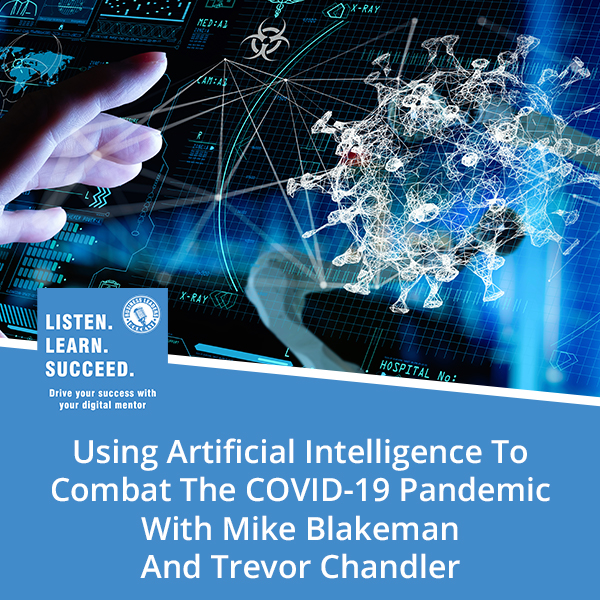
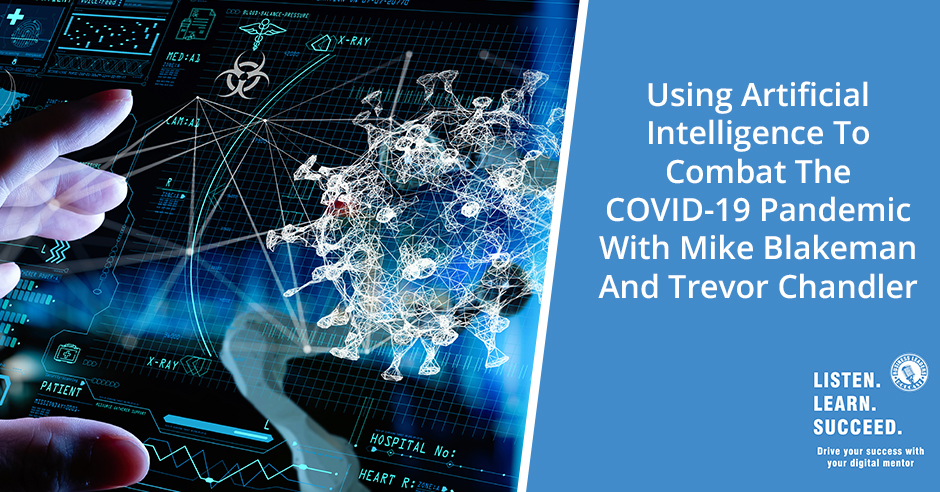
The COVID-19 pandemic has forced everyone to take a good, long look at how things were being run once upon a time and see how things can change for the ultimate benefit of public health. One of these fields is the technology sector, where every day, companies find new uses for existing technologies to help the world adapt to the crisis. Mike Blakeman and Trevor Chandler are, respectively, the CEO and CTO of Visual Globe. They sit down with Bob Roark to discuss how artificial intelligence can be used to combat the spread of the COVID-19 pandemic. The time to act about the crisis is now, and with these technologies on hand, we might just be able to make the full recovery we need to.
—
Watch the episode here:
Using Artificial Intelligence To Combat The COVID-19 Pandemic With Mike Blakeman And Trevor Chandler
My name is Mike Blakeman. I’m the CTO of Visual Globe. With me is Trevor Chandler, our CTO for our technology and what we’re doing now. I know, Bob, you wanted us to share our vision and what we’re trying to do with our experience and solutions. We’ll be talking more about that technology here.
The thing I wanted to do, which I typically do, is you guys have created an ability to solve some particular problems. You were working in the utility space and then we had the pandemic come along. You took, adjusted, and adapted to also solve this problem. If you would talk about what problems or benefits you bring to the utility space and then also talk about the benefits that you’re bringing to the safety of the community in the COVID timeframe.
I’ll give a brief overview of what the company’s doing now and what we’re about to do with the wellness program. I’ll allow Trevor to go into the details of the technology and his experience with artificial intelligence. Our company is strictly focused on data and information that we receive from our customers regardless of the market we’re serving. Now we’re serving power and telecom, but the information that we receive, it’s all about taking raw data and converting that to information. We convert that to put that into insight and actionable items that they can react to. This has been on extracting information out of images that we collect on the distribution poles for telecom power and the ability to go out to the field and capture transformers with infrared technology to be able to determine if there those assets are healthy.
As a company, Visual Globe is focused on physical assets that you can see on earth and to determine their wellness, condition, and maintenance and what needs to be handled and what the decisions need to be made in order for something to be reacted to or supported by others in the field. Right now, our contracts are simply going out and doing auditing at poles on the transformers and those who are attaching their equipment to the poles and be able to pull that information right out of the images based upon artificial intelligence and the automated feature extraction. Let me move it over to Trevor. He’ll talk more about the technology as it relates to what we’re doing and then we’ll move into what we see as a great opportunity for people to get back to work using our technology.

What we’re going to go through here is there’s a benefit from this company, first in the utility space pole and equipment and monitoring and creating intelligence from the data extraction. We were issued the COVID pandemic. Data extraction and looking at heat signatures and so on map nicely over to the software and the potential needs that are coming from Visual Globe as it relates to distancing, face masks, and temperature reading. Trevor, please proceed.
Bob, we were extracting insights from pixel-based media images of power poles, transformers, and creating all kinds of important insights for these companies. When the pandemic hit, we went to the core of our technology and started thinking, “What can we do to help people get back to their jobs? What can we do to help keep people safe? What can we contribute to the humanitarian side, have some value here, and see what we can do to help out?” Our technology did transfer quite well for us to determine if a transformer on a power pole is within a particular heat or to determine if a person has a fever, for example.
Those are very similar things. We are already doing the location-based type of insights so we could track locations of where things are happening and whatnot. We’re very good at grabbing information without violating the privacy, but still being able to use that information for helpful things. For the pandemic, it’s all about making sure people are social distancing. It’s about seeing who has symptoms and not just when they walk into a building to check their fever but to check their fever in different areas across different locations to understand what areas they work in. If somebody starts exhibiting symptoms, we can detect it before too many people get exposed and we can even tell what areas the person was in. Without going into any privacy issues, we can alert in certain areas to let them know that there may have been exposed.
As for the pandemic, it's all about making sure people continue social distancing. Click To TweetWe have a whole set of these types of useful features. The core of it is doing computer vision, artificial intelligence with RGB cameras, regular camera images to detect people where they are. Thermal sensors to detect their temperatures. We also can take data from any data source like text-based logging from USB or remote infrared thermometers. We can listen to coughing, sneezing. We can do a wide variety of these types of insights stored all on a map and we can create triggers. If this person was within this distance of another person, then send an email, beep a speaker, send a text, play an audio file, etc. I’d say the main features are thermal detection for temperature. We do facial recognition to detect the face. On multiple points, we go ahead and grab the temperatures and then average across all of the points to make sure that we’re very accurate.
Don’t forget to mention the mass detection.
That’s one of the core ones as well. Face covering, mask, that type of thing so we can discover a face. We’re very good at detecting eyewear, mouth, facial expressions. In fact, we do full-blown emotion detection for intent recognition and things of that nature. For this particular situation with the COVID, thermal then sounds, tracking where people go without identifying particular people and breaking privacy laws or concerns. Face coverings, we can even track eye coverings like eyewear. The COVID is getting spread largely through the nose. It’s put in people’s nose and the second cause is rubbing or particles of the air getting into the eyes. We see eyecare and masks both as being important.
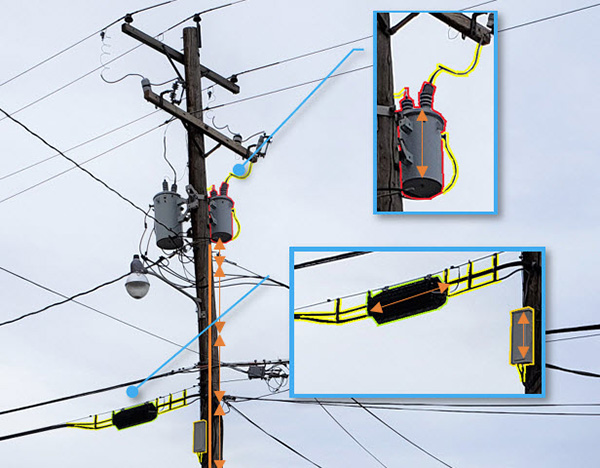
I was thinking about its application. I’m the business owner and I’m listening, going like, “I’ve got my normal cameras for security in my building. I don’t know if I have a thermal scanner.” I would imagine if they don’t know, they don’t. For the business owner that’s tuning in and go, “I’m going to try to go back to take care of my employees as they return to work.” Are you in the camera business? Are you in the data business?
We are the data business and we can utilize any camera they have like RGB, regular cameras. If they don’t have thermal, it’s best if they get it. If they don’t get it, we can use other forums like remote IR thermometers. Maybe they post their security guard and they do remote thermometer readings or maybe you give each employee a USB data logging temperature stick. We configure all those devices. We gather all that information.
We want to focus on the data side of things. We do not want to be in the hardware. We do not want to be in the installing. We want to be agnostic towards the types of sensors, RGB cameras, security cameras, and thermo sensors. We want to be completely independent of those.
When I talked to my father-in-law and he talks about background noise and his hearing aids. He goes, “If you get in a loud restaurant or somewhere that’s got background noise, that’s a mess.” For you, if you were taking and doing work either in a casino or in a meatpacking plant, I think about the chips, the noise, and any of the other. Can you discriminate between the background noise and the signature noises you’re looking for?
Absolutely. We have many different ways to do this. We could do software-based depth detection inside of a camera. We could tell how far everything is. One technique we’ll do is a depth-sensing software run on an image or frames in a video. We could do this in real-time. We’ll turn it into a color map and then we’ll use different color detection techniques. That is one of the ways that we split the distance. Another thing we do is we take objects that are in the scene and then we perform distance calculations, distance to pixel, take into account the distance of the camera from the objects they’re taking.
In essence, we create a bunch of little rulers of objects. We identify a lot of objects in the scene that have a known size that we calculate based on the layers, the distance, and then we could use those objects as rulers to having very precise measurements, sometimes down to millimeters. This is something we do on power poles all the time. We detect wires, their gauge, what type of connector they’re inside of. It translates quite well to being very accurate in real-time, even dealing with multiple types of sensors in very busy environments.

What type of companies owns utility poles? What benefit do they derive from this data gathering and discrimination that you do for the utility pole business?
The utility poles are owned by various types of companies, whether it’s telecom or power, and even government-owned poles. What we’re doing there is simply reaching out to those companies and explaining that there’s a better way to information, be able to identify features that have never been done before. We’re learning now that the companies are coming to us saying, “No one’s doing what you’re doing and you’re the first.” We’re certainly in a great position, but what we want to do is see our technology apply to those who want to get back to work and we see it as opening up doors.
The biggest threat is getting people back to their offices, one. You’re going to have the mass transit issues where there’s going to be large gatherings, whether it’s a transportation here or a large gathering such as church and other types of gathering that occur. We want to get people back to work and be able to help these clients on the backend in terms of the workflow process. What is it they want to accomplish during this sequence of events? We know we can gather the data, connect to the data and pull information now. As a company owner, what do you want to gain from this?
The thing is if the owners of companies, they’re going to look back and tell their employees, “We’re making your place safe. We’re giving you a sense of security. We’re looking out for you.” There’s some kudos or some goodwill going on with the employees when they see themselves going back to work, not being at risk. I also see the opportunity to sporting events, whether it’s getting them into facilities so they can practice, getting people back to work in manufacturing, pharmaceutical companies getting their people back to work to manufacture and distribute. We see a lot of that type of opportunity. Right now, we’re seeing people come forward to us and say, “I want people back in their offices, and here are my requirements to do so.”
In the power pole business, the insights we gather, there are situations constantly where there are attachments on a power pole that nobody knows about and money is owed to somebody. Either somebody isn’t paying or somebody hasn’t collected. When you’re dealing with hundreds and hundreds and thousands or millions of these poles, one simple mistake sometimes can result in tens of millions of dollars. That’s one side of it. We come in, we identify who’s using what poles, what services are being used. We notify companies that didn’t even know that they forgot to collect $15 million over here.
The other side of that is violations. They’re violations that due to how difficult it is to get these insights from so many poles, the phone companies can’t get in compliance fast enough. The government comes in and these people get fined. The companies get fine millions and millions of dollars and they get deadlines, “You have two weeks to fix this. If you don’t, that’s another $5 million.” They can’t. It goes over and it repeats. They get stuck in these vicious cycles. We come in. We find the violations in thousands of images. We can run probably a million images in 8 or 9 hours. We find all the violations in advance. The companies can take care of them and ultimately, they save huge amounts of money. The whole thing, in general, when you take all the extra money they get by properly billing their joint use on their poles if they’re forgetting to bill or don’t know about and you eliminate the violations that we’ve discovered for them now before the government does, it’s a huge profit and violation cost reduction.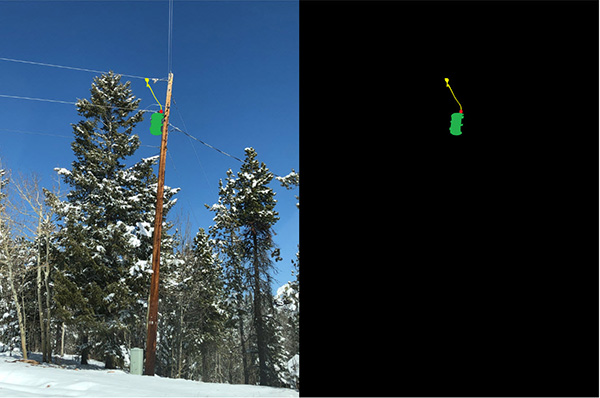
That’s exactly what I was heading toward is I think about, why is the company interested? If there was a 5G rollout, Mike, you and I talked about that once before, which poles qualify, which poles don’t. The thing that strikes me that’s in the news a lot is supply chain issues in the food and meatpacking plants. There’s a great deal of fear with the employees in meat packing plants because they’re concerned about the environment that they’re all going to take in and share whether asymptomatic or symptomatic. How would you envision your technology addressing that potential issue in the packing plants?
That’s a fantastic use case for us. In that situation, we would use thermal sensors to make sure the heat at the right time was at the right temperature. When the correct heat is achieved during the preparation of particular foods, that’s when the virus is killed. That’s one major area in the preparation of the food that we can have a huge effect. We can also from a regular camera check the consistency and the characteristics of the meat or whatever food it is and make sure that it’s not contaminated. We can do this with actual size imagery, but we can also do this microscopic. We could even put a microscope and we use these microscopes that are handheld. You put them on a little stand, on the conveyor belt and they can magnify up to 2000x. We can detect a huge variety of contaminants at that level.
You may not have a fever when you get to work but develop symptoms later in the day. Click To TweetTo detect them and to save people from getting infected, that’s one huge part of it. The other part is we could even implement inside of the manufacturing and have an alert, hook it to quality control where that gets flagged when it detects contamination. Right then and there, it gets addressed and it gets routed to the right conveyor belt or whatever it may be. We have an open API with our capabilities. That’s why we could go from power poles to COVID, making sure people in the workplace can go back to work. They don’t have fevers or whatever and then we could switch to make sure that the food in the manufacturing is also safe and integrate into with that type of thing as well.
I think about the employees that are coming and they’re so concerned. There’s a plan up Nebraska right now. I’ve got this mental image of the entrance coming into the packing plant where all the employees typically come and go. There would be some level of imagery and data that are collected at the entrance. A quantity of the employees are asymptomatic and they have no temperature. They’re all the things that you look for. They’re not coughing and they don’t have a runny nose. They’re all wearing their mask and all that stuff, yet you have the 1 or 2 people that didn’t know. They have it, but they don’t know it. How do you take and identify those people and then create a notification that they’re not allowed to join the other pool of workers? How does that work?
One way we talked about is using that USB temperature reading. Everybody at home would have a thermometer that they would check their temperature before they left home to go to work. Why drive all that distance when you get a high temperature and show up to work and then have to drive back home? They’re very inexpensive temperature readings that you can plug into a USB port and be able to track your temperature and prevent even being exposed outside.
Bob, in addition to that, certainly if we can get them taken care of before they come into work, then we’ve won. That’s the best-case scenario. If they do make it closer or into the building, we could track people. We could have an anonymous list face tied to badge number and we can integrate into any of the badge APIs. We could stop the door from opening. We could flash a red light. We could send a notification to the security that somebody needs to approach that badge number and tell them not to come in. There’s any level we could be as open as sending me an email every day reporting the people that probably shouldn’t have gone in. We can be every bit as strict as plugging into the badge system and not allowing the door to open. It depends on the owner, what they want to do, and what’s appropriate for privacy, federal and state law, and all of that. From a technology perspective, we can get in there at any level they want and enforce it, automate it, hooking into other systems or whatever we need to do there.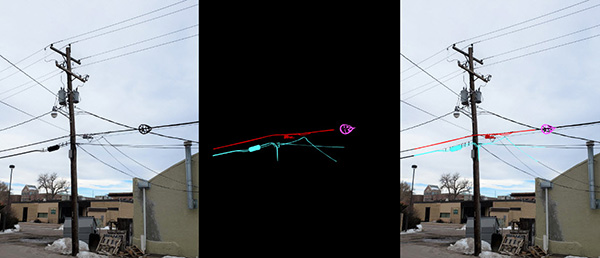
I was thinking about these people coming through. You may not have a fever when you get there and you may develop symptoms later in the day. There was a restaurant I heard of out of Chicago. They instituted a rule where every employee had to wash their hands once an hour. That’s how it is. If you didn’t want to do that, you couldn’t come to work. Let’s say that there was a certain protocol that you established in the company. You said, “Bob, I want you to take and check your temperature every three hours. I want you to wash your hands every hour.” Could you guys set up a protocol given those behaviors and say, “Employee number 27, good old Bob Roark over there is not washing his hands,” and notify him to get with the program?
Absolutely. In fact, we could set up cameras at the washing stations so we could take their temperature every time they went to wash their hands as well. There is a huge benefit in companies that are willing to have a process and the technology excels when it’s paired with a process of safety.
You set the company policy, which I’m sure would have some legal ramifications if done properly. For them, their equipment expense wouldn’t be extraordinary because they’re video cameras. You have it tied to the badge somehow or another. You’ve got this data stream. The data stream is collected there. Does the software that you’re building reside at the company or is it on the cloud?
It can run in both. We understand that some organizations are going to want to run it or have to run it locally, especially government cleared facilities and things of that nature. We support both.
You’ve got the soft of the on onsite and it’s collecting data. I’m the offending person again and for whatever reason, I’m flagged. There’s a sequence or notification that goes to the appropriate individual. What data shows up at that person’s workstation, iPad, or whatever?
In essence, they would log into a web application. The dashboard would be zoomed into the locations of interest. They could drag and drop them. They can configure the screens to have twelve different views on each screen. They have the locations. In the locations, there are markers for every place where there’s a sensor, things of that nature. You have that view. When they set up the system, it feels like this. They set up these rules. It can be like, “If anybody goes through this area and their temperature is within this range, they can have a list based on what type of facilities they have. Send an email, shut a door, sound an alarm, play a WAV file, make a web service call, so they’ll have these varieties. They’ll set these things up.
Once they get these rules set up, they’ll be enforced. They have the main dashboard that we can configure to have the things that are most important to them. Each person, when they log in, they can have a personalized one based on who they are. There are also roles. A security guard may see different things compared to a wellness supervisor. It’s completely configurable and it’s all rules-based. It’s very logical. They can be notified and see whatever is most important to them. They could turn that on and make that the most visible.
The other thing that we’re seeing is the need for each company to have its own set of requirements and protocols. They’re going to set their own. We’re here to accommodate those. They’re going to be saying, “Wash your hands every hour, five hours. Wear a mask, not wear a mask. Temperature readings.” There’s a whole host of things that they’re going to set as their own safety precautions that we can address from various angles. It’s all about reading those camera sensors and be able to make some decisions from that, then sending out alerts to whoever. “Who do you want to receive the alert?” The other thing we’re thinking about is using our technology to alert the right people. Having a new person standing at the front door, front gate, you don’t have to do that. We could replace that person with our technology.
Another piece is as the organization sets up these rules, we’re going to have metrics. We’re going to know what rules are effective, which ones are not so effective. They’ll be able to tune their rules and policies for the maximum effect. That’s a whole other aspect that is often left out even when we talk about the companies that are taking some precautions.
I think about the evolution of data versus intel. Collect the data, massage that into intel that looks at trends, and go, “If we did all these protocols, then we should see a reduction in this outcome.” You go, “We did all this data.” Let’s say that whether it’s this particular event or some other, you get an evolution where everybody’s say symptomatic but they should for lack of a better term. We talked about this that there are devices that can pick up that data as well.
The openness of our system is probably one of the greatest advantages. It’s very easy for us to plug in new algorithms or equations to process. We have an open API for all types of devices. Not only can we handle any digital patterns, but we have ways to handle analog. We have converters that will take analog patterns and we can look at them. Even analog information is useful.
For the people that don’t know what API is, what’s API?
It’s the ability for us and our software to talk to other types of devices like cameras, mobile phones, and people’s computers and things of that nature.
For the people that are going like, “This is a little Orwellian,” what do you say to those people?
This is not something about software that we’re doing. This is a problem that the world is waking up and finding that we have to make some decisions of privacy versus safety. For us, we don’t feel that we want to get involved in any political way. The software will empower a wide variety of different ways to be flexible, but by default we have a number of mechanisms built-in like using a badge number instead of using a person’s name. Declaring something that something happened in this location instead of saying, “Joe Smith came to work sick and got everybody else sick.”
Let me add to that by saying that it gets to be overwhelming on the technology side. What’s inside that box is insignificant to the results that you’re getting. That’s what we’ve got to focus on is what the science and the technology behind it is great. Artificial intelligence learning is becoming a popular subject to talk about. Not everybody understands it, but they’re starting to get it. What I want is to see the insights. I want to see the actual intelligence and I want to see results.
I think about the test stations that were highlighted out of South Korea. You had somebody in a booth with the device and they pointed out and collect the data. You’d see that repetitively. My sense of the privacy issue, first blush, is that somebody is going to be doing it. Whether it’s a human that’s doing it or a device that’s doing it and for the rest of us, the choices are, do you want to have people that are repetitively re-exposed to the virus or that we have immunity to it or not or do we take, be proactive and start trying to gather and use the data? As our understanding of this particular virus or the next virus improves, then the quality of the algorithms to be specific will amend and adjust as well.
If we do get into this age where we have to use information, if we want to control the spread of the virus or new viruses that happen, at least we’re doing it for our health instead of doing it to spy on people or any of these other reasons.
I think about the end benefit. The end benefit is we can resume life to some extent like we have where you can go somewhere in a group. You’re comfortable that everybody in the stadium is at the same level of wellness that you are. You can go to Las Vegas and enjoy a show. You could go to your local restaurant and enjoy it. All of those things, this is an enabling technology. People in our audience who are interested in hearing more about what you guys are doing, what’s the best way for them to reach you, Mike?
The best way is to go to our website, which is Visual-Globe.com. We have a tab called COVID that’ll explain the wellness and safety measures that we have and the solutions that we can provide. That’s probably the best way to get a good understanding of what we’re trying to do.
People will go, “Who are these two guys? Where did they come from and what’s their expertise?” Mike, I thought I would start with you. You’ve been in this space for a long time.
I have been and it’s all about digital information.
You were doing work on mapping and technology for a very long time.
For 3D mapping, technology, integration of data, all about digital information from engineering to GIS to as-built and things of that nature. What we’re doing is we’re adding a new flavor called artificial intelligence to that data.
What about your background, Trevor?
I have fourteen patents in artificial intelligence. I have completed 150 different technology projects with the company I started with no funding. I let it to acquisition in year three. I let it to a second acquisition for further growth. I’ve done work for over a hundred companies. I have thirteen world’s first achievements in automation and very specific types of artificial intelligence. My virtual reality software is featured on Gadget Man season two episode one. It has 2.5 million viewers. If you look at that episode, it was in the early days before the Oculus rift. It was the early days of the Oculus. DK2 was out at that time. All the software you see running in the background that they’re using the headsets on is my creation. In essence, for a very long time, I’ve been solving problems that people don’t think are possible to solve. I do it so often that it’s become the way I think. I don’t go after technologies and follow them and try to progress beyond them. I go in the opposite direction. I try to shield myself sometimes from all bias and then approach problems from a completely fresh perspective with no limits. I try to make that happen.
In the end, all these new policies will benefit everyone by allowing life to resume as it was. Click To TweetThe point behind this show is you and I, Mike, were on a podcast months ago. We were working on the application and trying to aggregate all the various pieces of information on equipment and where’s that, what it’s doing, and what’s the health of that equipment? The utility pole opportunity showed up and you guys have contracts for 500,000 poles or some such number.
Yes, we’re getting hundreds of thousands of poles right now.
It’s a viable technology that’s in the field being used right now in the utility pole world. That was going along fine. We got issued this once in a lifetime, every ten-year event again. You’re now working, trying to help out. I think about what’s important to a company. You’ve got the physical assets and then you have the human capital. You’ve gone from solely working on some of the physical assets to try to protect and help out with the human capital that’s coming in and out the doors every day. I think about machine learning and artificial intelligence. Trevor, maybe you could expand on this. People get confused about machine learning and artificial intelligence. Would you care to expand on those a little bit?
Artificial intelligence is quite often misunderstood. If we started artificial intelligence, it’s an umbrella of a number of different technologies. Computer vision is an aspect of artificial intelligence. Neural networks are a component of artificial intelligence. Machine learning, depending on who you talk to, some people consider it a data science and some people consider it part of artificial intelligence. Personally, I use artificial intelligence as a term to explain any computer process where the algorithms used are adding a tiny bit of common sense into the equation.
That’s the real difference. We’ve taken a step away from keywords and exact conditions. Artificial intelligence has given the computer the ability to take a little step of faith and use it. The common sense probably is equivalent to a 2 or 3-year-old child is what it comes down to. It’s not always easy to get your kid to do what you want. If you work hard and you train them hard, you can get them to do some pretty amazing things. Machine learning specifically is taking data and finding patterns within it and doing things with those patterns to make predictions, to make dynamic actions happen.
Artificial intelligence generally is a whole bunch of things. It’s computer vision, looking at pixels and images and getting information from them. It’s using neural networks, which is a way to hold data where you hold a little tiny piece of data in millions of places at the same time. Each of them can talk to each other very quickly. They each only have one piece of information and they only know one thing about that. “I care about one thing. What I think about this one thing that I’m 99% sure that I’m right or I’m only 20% sure that I’m right.” That’s how neural networks work.
Each of these little pieces of information tells each of the other pieces what they think about the one little tiny thing they know about. It’s like the game where if you take a penny and you double it and you double it. In a very short amount of time, you have a huge amount of money. Neural networks use that same structure. The old-fashioned way is a database. You may search for the word bananas. You may have a million rows in your database. Bananas may be on row one and on row one million. It may take a minute for the query to come back. Artificial intelligence may learn where the bananas are and pass the information to each other. They call it propagation. It’s so fast that in twelve milliseconds they’ve found the same information or made some computation.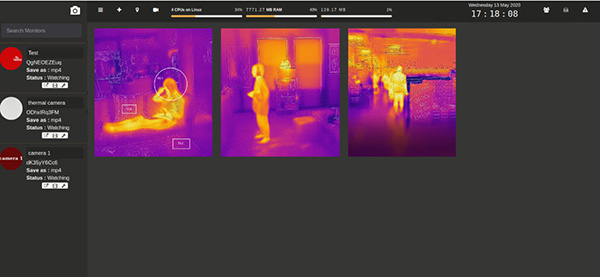
Mike, when you look at the landscape and working with Trevor and understanding where you think the lowest hanging fruit for Visual Globe is in the time of the COVID pandemic, where do you guys see the first adopters of your technology may be coming from?
We’re reaching out, we’re seeing the sporting events. We’re seeing those that have offices that want to get people back to work. We’re seeing a lot of interest in a variety of different markets, but the office building is probably the number one getting them on the front door and have them go to their desk safely. We see expansion in so many different areas. With this technology that Trevor has developed for Visual Globe, we’re seeing the ability now to take what we have and apply it to their requirements. You’re asking a question about what we’re doing. Trevor is also working in the COVID and wellness. When you write these algorithms and you save them, it’s a machine that’s working. The machine starts working and it will continue working on a particular application.
We can move to other things. You can keep feeding that machine in one area to provide insights and then you can get to another machine and provide different insights. It’s very efficient. It doesn’t require a lot of people to do this. We’re replacing the process of trying to collect data. If you wanted to get information on people’s health, you’d have to call a doctor. You’d have to call them and say, “How do you feel? Check your temperature. Where’s your desk and how far away are you? Are you wearing a mask?” Let me walk around and see if everybody’s wearing a mask or taking all that out of the equation, making this thing and most efficient model as possible.
As you’re talking, I was thinking about telemedicine. You’ve got this setup where we’re looking at each other. I think about the quality of my Logitech camera, which I understand they’re now in short supply because everybody’s doing this stuff nowadays. I think about an enhanced device at your home for telemedicine where the data feed to tell a physician is enhanced and better. That would be a remarkable tool for telemedicine, which will evolve.
I created a device exactly like that. I called it the Intelescope. That’s why we have some of the capabilities to do things with microscopic images and get down into objects and look at them. I made a device that has an embedded microscope right in it. The device itself is handheld with a touchscreen. It’s a combination of an ASIC and a PC computer combined. It can do computer vision, which is looking at images and video to derive insights at 100 frames per second. That’s an object that we have access to. We’ve talked about what we can do with it.
For the COVID, especially for manufacturing, it has a lot of the sensors you would need for that. Although we don’t want to become a camera provider and things of that nature, we have the ability and we’ve had capabilities to make very small pieces of computing, very big important jobs. Telemedicine is going to be huge. We’re positioned well, our capabilities. We already know they can be portable so somebody can have something with them that could take better diagnostics as well as the communication you and I are having.
The thing that strikes me about all this is it’s in the lab and maybe someday ready to go. You are in the field in the utility space. The chief difference was utility poles by and large are stable and staying in one spot. The other inventory of items is moving around, but they have to come through certain gates or areas to find them. This technology is available now.
The biggest aspect of artificial intelligence and what we’re doing is you’ve got to have the problem first and then fix it with AI, where others are out developing AI and trying to find for it. We know the problems that they’re faced with the telecom, power, and people out there trying to gather information. We know the problems that are existing, but people are going back to work and we’re applying the AI to that.
That’s a huge problem because a lot of people, for the sake of it, this happens with all technology like with big data, for example. People with small data sets had to have big data because big data was the newest thing. Much in the same way, for every 100 artificially intelligent solutions, I’ve seen 40% to 60% where had they not used artificial intelligence, they would have been better off and had a better solution. We’re approaching the problems and we’re addressing them. Frankly, artificial intelligence, we use it in conjunction with our software with traditional data methods and other types of things. We don’t do AI for the sake of AI. We do it where we get an advantage that we can’t get anywhere else.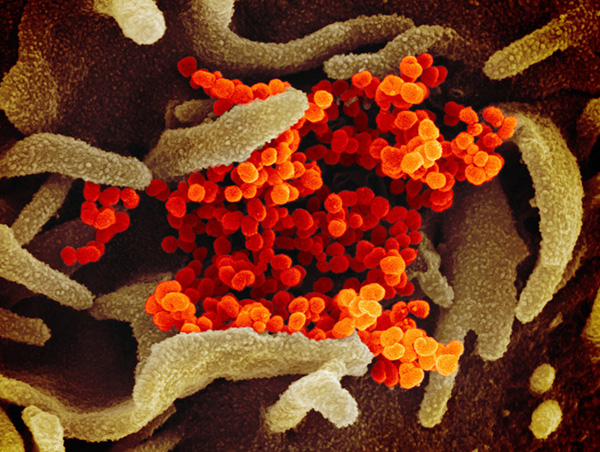
In many cases with a bunch of people in the AI space, they’re a solution in search of a problem. For you guys, it’s the other way around. You already have a solution set done and you have another problem showed. I think about the iterative nature of what you are doing. It started on one spot, then it went to utility poles, now it’s in COVID health space. The next problem comes along and you go, “If it’s all indicator-based, we could take and gather the data and start creating solution sets from the data gathering.” This is off standard topic that we do on the show, but I wanted to make sure that this got out. Is there anything that I should have asked you guys about what you’re doing that I didn’t, that you think would help the audience understand and perhaps see where you have a solution set for their problem?
The one thing I would say is that our software, we look at the problem first and we have a huge variety of solutions we can apply. If you have a problem and it doesn’t sound exactly like what we’re explaining, still tell us about it. Reach out to us, talk to us about what we can do for you because our strategy is to be flexible. Technology is changing faster and faster. That’s what we excel at is getting the best of the best and finding out what problems we can solve with it in a newer, more efficient way. Come to us with your problems and we could tell you how we can help you.
Trevor is right on track there. I do believe that the problems that are out there that people are faced with, we have solutions that we can talk to about. It’s all about what Trevor said from the beginning. If you have a camera, we’re all about analyzing information from pixels, from the RGB to the security cameras, to the thermal. That’s what we’re talking about is, and then taking that information and transposing it into something extremely valuable. That’s what they’re seeing. They’re seeing value.
Mike, Trevor, I appreciate the time that you spent. For our audience, I would encourage you if you’re not sure, the worst thing you can do is not reach out. Reach out to Trevor and Mike. Tell them what you guys have got going on and say, “Is there a mechanism for solving the problem?” Mike, Trevor, I can’t tell you how much I appreciate you taking the time. Trevor, you’re coding like a machine, which I suspect you stay behind in your coding issues. Thank you so much for taking the time and telling us about what Visual Globe has done to try to help in the COVID timeframe.
Thank you, Bob, for allowing us to come to your show.
Thanks.
Important Links:
About Blakeman Mike
 International, a 3D digital mapping company producing 3D maps of the US.
International, a 3D digital mapping company producing 3D maps of the US.
After selling the company, he founded Visual Globe to fill the large gap in the industry between 3D CAD/BIM and GIS and disparate data and the lack of a visualization bridging asset databases.
About Trevor Chandler
 Trevor has created over 150 successful technology projects, holds multiple patents in advanced artificial intelligence, and has 13 world firsts achievements in automation, AI and other types of technologies, algorithms, and processes.
Trevor has created over 150 successful technology projects, holds multiple patents in advanced artificial intelligence, and has 13 world firsts achievements in automation, AI and other types of technologies, algorithms, and processes.
Love the show? Subscribe, rate, review, and share!
Join the Business Leaders Podcast Community today: